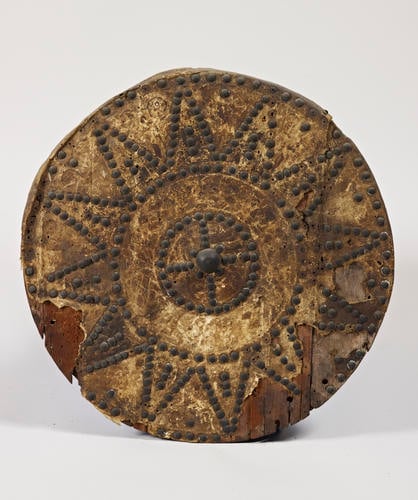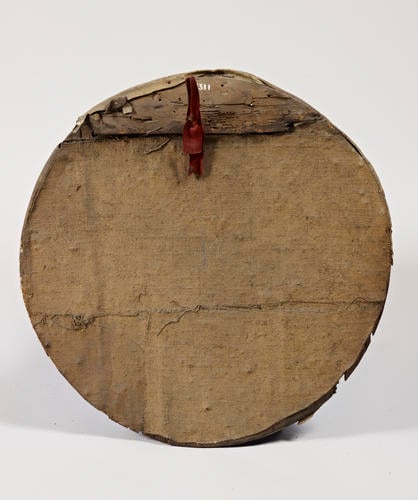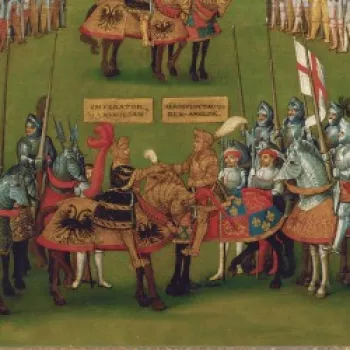Highland target (targaid) possibly late seventeenth century
Pine, leather, brass | 49 cm (Width) (diameter) | RCIN 27311
-
Highlight target (targaid) of circular form, made of two thicknesses of pine boards set at right angles to one another, covered with thin brown leather, much abraded and torn, and secured by numerous low dome-headed all-brass nails; in many cases missing. The nails are arranged in three concentric circles, the outer two linked by twelve triangles, the inner one, by four radial lines to the much larger central dome-headed nail.
The surfaces of the leather in the central area and in the band between the two inner circles have been worked in low relief with strapwork, and the outer band decorated with addorsed scrolls apparently only painted on. The central area is slightly raised as if it covered some sort of padding. Only a small section of one of the inner boards survives.
It is possible that the thickening at the centre of the shield is due to slices cut from the fungus found growing from the stem of birch trees. The fungus, Fomes fomentarius, was widely used in the Highlands as a substitute for leather when dried. Experiments carried out in 1983 found it impossible to stab a dagger through dried fungi of this type.
Measurements: diameter of front board with the grain of the wood 47.6 cm, diameter across the grain 47.6 cm. Weight: 1.380 kg.
Text adapted from Arms and Armour in the Collection of Her Majesty The Queen: European Armour, London, 2016Provenance
Illustrated, apparently in much better condition, in a lithograph of ‘Queen Mary’s Closet’ dated November 1837
-
Creator(s)
(nationality) -
Medium and techniques
Pine, leather, brass
Measurements
49 cm (Width) (diameter)
Category
Object type(s)
Place of Production
Scotland










